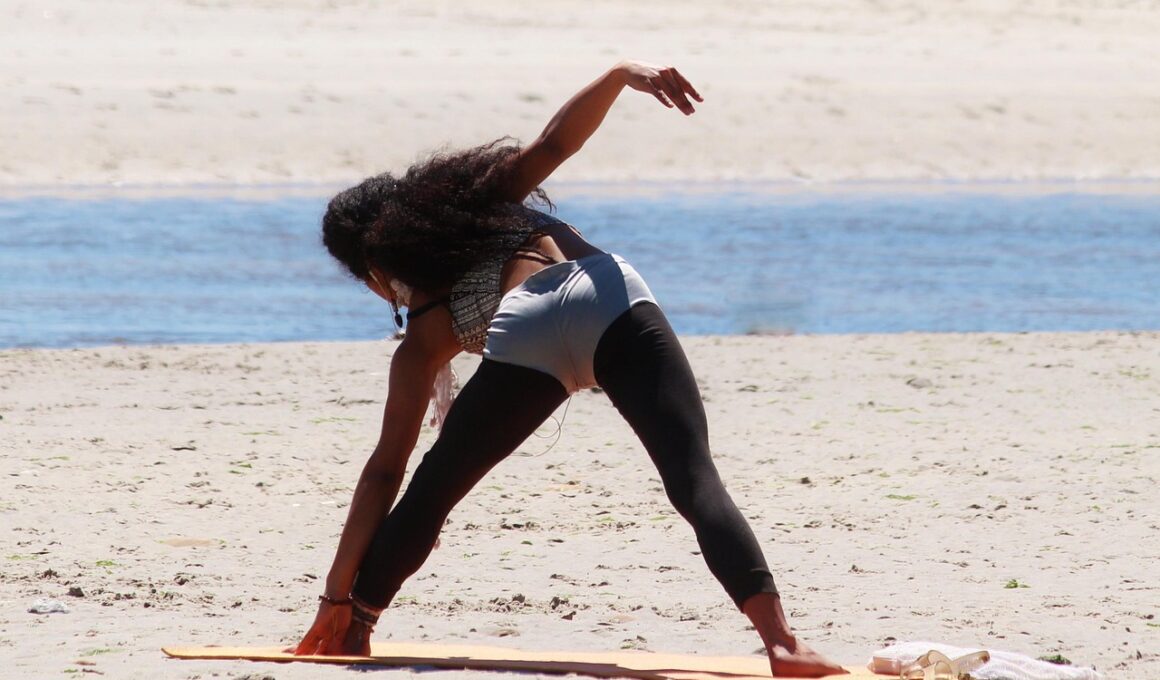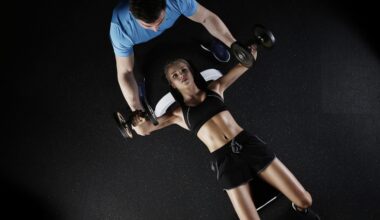Pilates for Core Stability: Exercises Customized for Body Shape
Pilates is an outstanding method for enhancing core stability, tailored specifically for various body types. Engaging in Pilates helps to develop balance, flexibility, and strength through controlled movements. Each exercise is designed to target different muscle groups, accommodating individual body shapes and fitness levels. The essence of Pilates lies in its focus on core engagement whilst promoting proper posture and alignment. Individuals can benefit from customizing their workouts according to their unique physical attributes, such as height, weight, and body composition. This adaptability not only enhances the effectiveness of the workout but also ensures a safe practice, reducing the risk of injuries. Furthermore, Pilates fosters mindfulness through breath control, allowing practitioners to connect with their bodies. This connection is vital for optimizing exercise performance and achieving better results. To gain the most from Pilates for core stability, it is beneficial to incorporate various exercises, each offering unique advantages. Whether a beginner or an experienced practitioner, understanding how to adapt these exercises to fit personal needs is essential for maintaining interest and motivation while promoting physical health.
Understanding Body Types
Your body type significantly influences the way Pilates exercises are performed and the results achieved. There are three primary body types: ectomorph, mesomorph, and endomorph, each with distinct characteristics. Ectomorphs generally have slender builds and may struggle to gain muscle mass. Therefore, Pilates exercises should focus on building core strength without excessive resistance. In contrast, mesomorphs possess muscular builds and can effortlessly gain or lose weight. They can engage in a more balanced routine that includes both challenging and restorative exercises. Finally, endomorphs usually carry more body fat and should emphasize cardio-focused routines to maximize calorie burn while strengthening the core. Understanding your body type assists in determining which modifications are necessary during Pilates practices. Tailoring movements according to body composition not only improves effectiveness but also helps avoid fatigue or potential injuries. The benefits of customizing Pilates practices can lead to a more enjoyable and rewarding experience as participants witness improvements in strength and flexibility. Thus, recognizing personal body types can enhance motivation and foster a deeper connection to Pilates routines alongside physical results.
To effectively develop core stability through Pilates, practitioners should consider integrating specific exercises tailored to their body types. For those with an ectomorph body, engaging in bodyweight exercises like the Plank can help strengthen the core without adding significant muscle bulk. These exercises center around engaging the core while maintaining a lean physique. In contrast, mesomorphs can partake in more advanced variations of these bodyweight moves, incorporating resistance bands or light weights to enhance the intensity. By actively engaging in resistance training along with Pilates, a mesomorph can improve muscle tone and definition. For endomorphs, movements that promote cardiovascular training, like the Hundred or Leg Circles, can effectively shed excess body fat. Combining these exercises with pelvic floor strengthening can yield impressive results. The key is diversity, switching up moves and intensities based on personal strengths and challenges. Additionally, working with a Pilates instructor can provide insights into maximizing custom routines. Emphasizing proper form along with modifications tailored to body types can lead to improved core stability and overall fitness results, creating a balanced approach to physical health.
Core Stability Essentials
Core stability is vital for maintaining good posture and preventing injuries during physical activity. In Pilates, core stability is emphasized through various isolated movements that inhabit the transverse abdominis and obliques. Incorporating exercises targeting these areas allows for improved strength and prevents undue stress on the spine. Moreover, maintaining a strong core density enhances athletic performance by allowing for efficient transfer of energy throughout the body. Proper alignment is another key aspect that must be diligently cultivated through Pilates practice, as correct alignment enables functional movement patterns to occur seamlessly. Building core stability not only enhances movement efficacy but also fosters better body awareness. Participants will soon discover they can perform daily tasks with greater ease. By prioritizing core work, anyone can achieve more reliable performance levels in their hobbies, sports, and rehabilitation efforts. Committing to a routine focused on core stabilization can yield substantial benefits across all aspects of life. Practitioners should embrace the opportunity to enhance their core strength through a diverse range of Pilates exercises, ensuring a strong foundation for future health on both physical and mental levels.
In addition to core strengthening exercises, incorporating flexibility training into your Pilates routine can enhance overall performance. Flexibility improves muscle elasticity, which plays a crucial role in preventing injuries while also enhancing mobility. Specialized stretches can be included to increase blood flow to the muscles, aiding in recovery and enhancing muscle function. For an ectomorph, focusing on lengthening exercises such as the Spine Stretch Forward or the Saw will create a long, lean physique while still strengthening the core muscles. Mesomorphs can engage in a blend of stabilization and dynamic stretching activities, helping maintain balance across muscle groups. Endomorphs should prioritize dynamic stretching routines that facilitate greater movement ranges but focus on core stability as central. Flexibility upgrades the muscles’ ability to perform Pilates movements efficiently and safely. It allows participants to challenge themselves without risking injury. Through properly designed Pilates sessions, individuals will find that integrating flexibility work and adaptation based on body types can create a balanced, effective workout routine. By incorporating these different components, practitioners can ensure they address all aspects of core fitness, resulting in long-term benefits.
Tips for Progression
As practitioners advance in their Pilates journey, gradually increasing intensity is essential for continued progress in core strength and stability. Before moving onto advanced levels, it’s crucial to ensure basic exercises have been mastered. This ensures that participants have adequate muscle control and understanding of body mechanics. Engaging with an instructor can provide insights into recognizing personal readiness for progression. Beginners should focus on reinforcing foundational poses before branching out into complex movements like rolls or circles. Consistent practice reinforces core muscle memory and coordination. Once a solid understanding of the fundamentals is achieved, additional resistance can be introduced using props like Pilates rings, stability balls, and resistance bands. These tools can enhance the difficulty of existing exercises while ensuring correct execution. Moreover, maintaining a regular practice schedule contributes to better results. Increasing frequency or duration gradually helps the body adapt effectively. Taking note of personal achievements is also motivating. Setting incremental goals can foster satisfaction and determination. Therefore, focusing on steadily increasing intensity and maintaining proper techniques leads to successful long-term results in Pilates for core stability.
In conclusion, Pilates is a powerful tool for enhancing core stability customized for different body types. By understanding individual needs and characteristics, practitioners can tailor their routines accordingly. Whether focusing on strengthening, improving flexibility, or increasing cardiovascular endurance, individuals can enjoy personalized exercise programs that cater to their specific physique and fitness goals. Through ongoing practice, participants will find improvements in core strength, endurance, and posture through their tailored Pilates workouts. By considering variations appropriate for body composition and utilizing elements of specificity, positive changes in overall physical health can be attained. Additionally, fostering a connection between mind and body through breath control enhances the experience. Therefore, committing to a customized Pilates practice empowers everyone, irrespective of body type, to achieve remarkable results in their journey for core stability. With significant progress in strength and flexibility, participants will develop a rewarding relationship with their bodies. Joining a community of fellow Pilates practitioners can also provide encouragement and motivation along the way. Ultimately, an individualized approach to Pilates enables more effective workouts, ensuring lifelong benefits for participants of all fitness levels.


